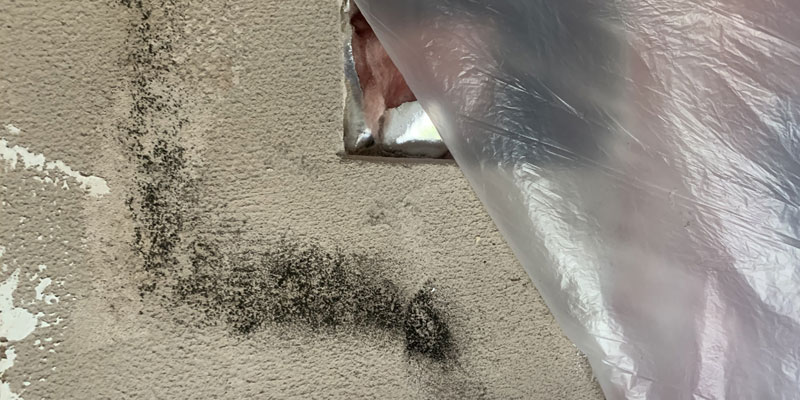Professional Mold Remediation Services
Don't Let Toxic Mold Put Your Family's Health at Risk
Stop mold damage before it spreads. Call now for a free, no-obligation estimate from a local remediation expert.
Free Estimate · Zero Obligation · Available 24/7
Can Mold Grow On Plaster?
It is a common belief that mold cannot grow on plaster.
To a certain extent, this is untrue.
Mold can be found on many surfaces under the right (or wrong) conditions.
What is true is that mold does not use plaster as a food source and will only be on the surface.
So, when it’s said mold does not grow on plaster, it generally means mold will not start eating plaster an off-gassing letting off Microbial Volatile Organic Compounds (MVOCs) causing humans to get sick.
Mold growing on plaster walls is growing on the surface of the plaster is likely growing on the paint or dust on the walls.
Why Can’t Mold Use Plaster As A Food Source?
Mold does not grow on plaster because plaster is non-porous and lime-based or clay. Although plaster does not support microbial growth, if porous cellulose-based material such as drywall is used on the backside of the plaster for support, mold can grow on the drywall.
Many different materials can be used as a base behind the plasterboard, and most of them are porous, which, if it gets wet under the right conditions, mold can grow and thrive within the wall cavity.
Homes are commonly built with a certain amount of wood. If you dig hard enough in a large percentage of homes in the world, you will find wood inside the walls. Wood under wet conditions can allow mold to grow and thrive on it.

So, The most crucial aspect to consider is never the plaster itself but what is behind it.
If there is wood or drywall, you may very well have a mold problem inside your walls.
It May Not Be Mold
If you are noticing a white powdery substance in an area that got wet, there may not be any reason to panic. It’s probably not white mold.
There is a strong possibility that this is not mold but efflorescence.
If you don’t know what efflorescence is, it can be described by:
In chemistry, efflorescence (which means “to flower out” in French) is the migration of a salt to the surface of a porous material, where it forms a coating. The essential process involves the dissolving of an internally held salt in water, or occasionally in another solvent. The water, with the salt now contained in solution, migrates to the surface, then evaporates, leaving a coating of the salt.
Efflorescence is non-toxic and easy to clean up.
When To Remove Plaster Walls
To get rid of the mold within the walls, of course, you need to take the plaster covering down.
But when does it need to be done?
If the area has gotten wet for an extended period and not properly dried out, just like any other building material, the plaster should be removed so inside the walls can be thoroughly cleaned.
While mold is absolutely a worth reason to remove a plaster wall, it’s not the only reason.
If an area has been significant water damaged, the integrity of the wall also has to be taken into consideration.
Be Careful Of Drywall Disguised As Plaster
Older homes built in the beginning to the middle part of the 20th century were mostly built without any cellulose-based materials on the walls.
Plaster is a much better fit to deal with water compared to drywall.
But there is a downside…
Plaster is not the preferred choice of most contractors this day in age. Drywall is cheaper and easier to install. This has really been the cause of the 1970s or so going forward.
The problem is when a repair has been made on an older home that has plaster walls; it is possible the person doing the repairs replaced a section of plaster with sheetrock and painted it. There would then not only be a section of drywall present, but it may not have also been insulated correctly, which can add to condensation issues.
Bottom line: If a home has plaster walls and repairs have been made, plaster should be put back up!
How To Tell The Difference Between Plaster and Drywall
You are determining what material your walls are made of in your home can sometimes be hard to identify.
The plaster will generally be more laborious than drywall.
An easy way to determine is to try to hammer a nail into the wall. If it goes in with ease, then it’s drywall. If you cannot quickly get the pin in the wall, then chances are its plaster or possibly even concrete.
When drywall gets wet, it gets incredibly soft and stains.
Plaster, on the other hand, will start to bubble.
How To Clean Mold On Plaster
Cleaning mold on plaster walls can be done in three easy steps:
Damp ( very lightly) a washcloth with an anti-microbial solution or disinfectant Scrape off any remaining affected paint Seal the walls with an anti-microbial coating.
Now:
While that was nice and easy to clean the mold off the surface of the wall, you have to ask yourself a fundamental question…
How did it get there?
If mold is found on the surface of your plaster walls, chances are it is on other personal belongings and building materials. This could indicate a humidity issue within the home.
Regardless if you have plaster or any other building materials like walls, controlling moisture in a home will always be your best prevention when it comes to mold.
Explore Related Topics:
Notice an update we should make?
We strive for accuracy. Contact us here if you see incorrect or outdated info on this page.

